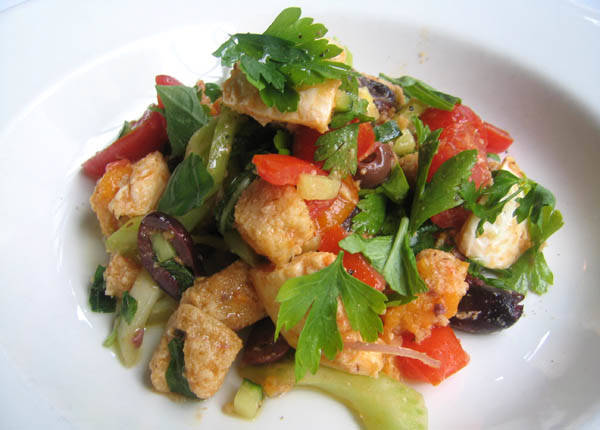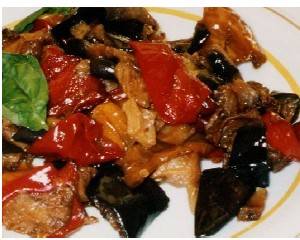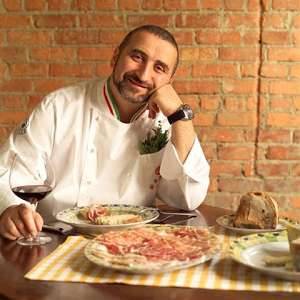Cucina Povera Mania
Never as in the last few years, everything that orbits around food has been so trendy. A now-fashionable style of cooking, popularized by master chefs Mario Batali and Cesare Casella, is La Cucina Povera. Literally this Italian expression means "cooking of the poor," or "peasant cooking," and on a deeper level it reflects a philosophy that is common in all cultures: making do with what you have to transform humble ingredients into dishes that are not only good but absolutely exquisite.
The spirit of La Cucina Povera is about embracing constraints and discovering the delicious creativity that can arise from making do with what you have in the kitchen. Have you ever been to an upscale Italian restaurant and seen panzanella on the menu? Well, in case you didn’t know this nicely styled but rustic salad made with stale, old bread, red onions, tomatoes, and cucumbers is a staple of Tuscan and Umbrian peasant cooking. We can say the same about caponata, the delicious Sicilian eggplant-based salad.
Executive Chef Cesare Casella may live and work in the most cutting-edge and cosmopolitan city on earth, but at heart, and on his menu, he has never left behind the bucolic Tuscan countryside of his youth (indeed the Dean of The Italian Culinary Academy at The International Culinary Center in New York City is originally from Lucca). At his trendy yet rustic restaurant Maremma, Chef Cesare introduces his customers to his self-described "Free Range Tuscan Country Cooking." If that means serving prosciutto bianco (house-cured lard with rosemary and grilled bread), farrotto (Lucchese grain cooked risotto-style) and Tuscan "cowboy style" spare ribs, slow-cooked with tomatoes, garlic, and giant spagna beans, who are we to complain?
His mentors being his mother for her natural cooking talent and his father for his never-ending search for the best available products, Casella is a fanatic about the quality of the products he serves.
Beans are his favorite food and he has 19 Italian heirloom varieties grown especially for him on a farm in the state of New York. He is determined to get Americans on a bean craze, and may already have a few converts. He founded “The Bean Republic," a charitable organization where he produces and sells beans, vegetables, grain and Italian spices — all organically grown.
At his Roman-style trattoria Lupa, Mario Batali serves trippa alla romana (tripe with vegetables), bavette cacio & pepe (pasta with pecorino cheese and pepper) and spaghetti aglio & olio (pasta with oil and garlic), simple pasta dishes that are simple and simply of the highest quality at a moderate price. Pasta cacio & pepe is an old Roman recipe in the tradition of la cucina povera that has always been a favorite of the poor and rich alike. It is incredibly simple and quick to prepare, but its success relies on having good-quality Pecorino Romano, pasta, and fragrant peppercorns. At Babbo, Batali’s critically acclaimed West Village restaurant, Batali pampers diners with comfortable rustic Italian cooking at its best, at the same time daring them to savor some very unusual tastes…tripe, lamb's tongue, beef cheeks, crushed squab
livers, and stinging nettles. "No matter how it's cooked, tripe is an ordinary dish," wrote Pellegrino Artusi, the author of "The Art of Eating Well", a little more than a century ago. A bon vivant and a celebrated host, Artusi thought of tripe was something fit for a family meal, not the sort of dish one would offer guests. Many of his contemporaries (we are at the end of the 1800s) saw it in a considerably different light; it was cheap enough that almost anyone could afford to buy it.
In La Cucina Povera the cooking techniques are simple, the ingredients seasonal and at their best. “These chefs are keeping tradition alive,” says culinary instructor and culinary tour creator Renee Restivo, “and this is just amazing. Nowadays younger chefs go towards a more modern and inventive approach, often disregarding rustic tradition. I think it has to do with the definition of being a chef, as people feel that in order to stand out professionally they need to do something different. Fortunately there is this trend to help simple cooking be validated again and for that we must thank
movements like Slow Food.” In her tours to Sicily, Renee introduces people to the cooking of the peasants and home cooks during authentic meals in private homes and in her favorite restaurants. “Sicily is such a hot region for chefs right now,” she says, “that top culinary schools in the U.S. have chosen it for chef’s educational journeys.”
There are restaurants however that try to put humble food on the menu but for them it doesn’t work, why? “It’s a bit of a challenge, and education is key,” continues Renee. And that’s what chefs like Batali and Casella are doing…food lovers are slowly coming around. Slow Food’s motto is “Take it slow. Living the slow life with food, as the focus is as rewarding as it is easy. Everyday can be enriched by doing something slow.”






































i-Italy
Facebook
Google+
This work may not be reproduced, in whole or in part, without prior written permission.
Questo lavoro non può essere riprodotto, in tutto o in parte, senza permesso scritto.